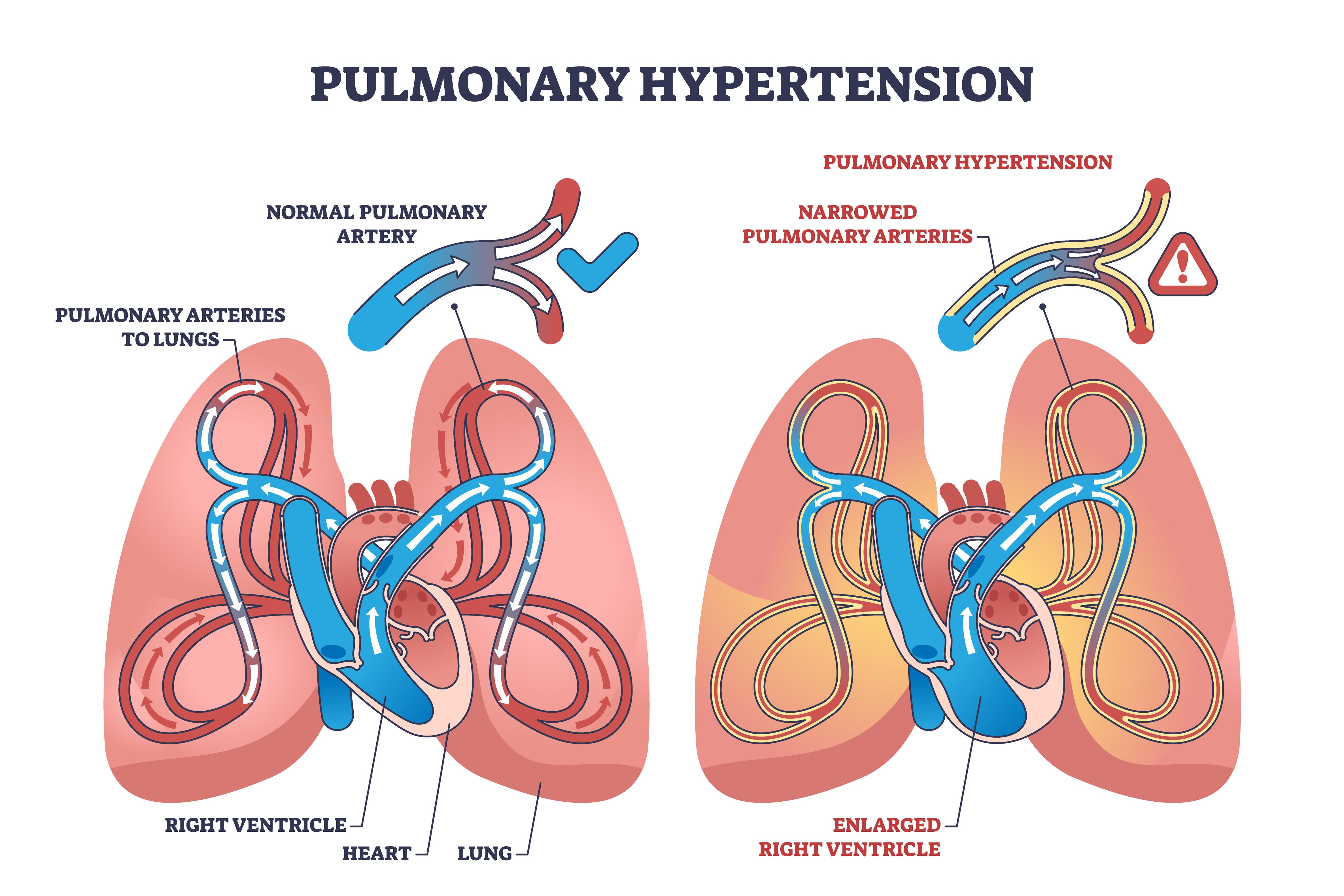- Center on Health Equity & Access
- Clinical
- Health Care Cost
- Health Care Delivery
- Insurance
- Policy
- Technology
- Value-Based Care
Oral Treprostinil, Selexipag Have Similar Efficacy in Patients With PAH
Patients with pulmonary arterial hypertension (PAH) had similar efficacy and safety profile when taking either oral Treprostinil or selexipag, indicating that Treprostinil would be an adequate replacement.
Differences in 6-minute walking distance (6MWD), adverse events, and clinical worsening reduction were non-existent between oral Treprostinil and selexipag. According to the review published in the International Journal of Cardiology, this should indicate that Treprostinil can be used to treat pulmonary arterial hypertension (PAH) with the same efficacy and safety as selexipag.
PAH is a disease that has a median survival of 7 years, even with several treatments becoming available in the past several years. Although prostacyclin is the most powerful treatment for PAH, complications can arise from how the medication is delivered. Oral therapies using analogs for prostacyclin may be able to avoid these complications. This review aimed to compare oral therapies that target the prostacyclin pathway in patients with PAH.
Pulmonary hypertension with narrow arteries and blockage | Image credit: VectorMine - stock.adobe.com

The researchers used MEDLINE, EMBASE, Scopus, the Cochrane Central Register of Controlled Trials, and Clinicaltrials.gov to look for studies to include in the review. All studies had to be randomized controlled trials (RCTs) through May 2020. The RCTs had to include a comparison between selexipag, oral Treprostinil, or beraprost with a placebo and had to be published in English. Studies were excluded if they were non-randomized studies, were retrospective or editorial, included patients that had prostacyclin analogs before enrollment, and included patients with PAH groups that were different from idiopathic, heritable, drugs and toxin-induced, PAH associated with connective tissue or HIV or repaired congenital disease.
The main outcomes included a change in 6MWD, death, and time to clinical worsening (TTCW). The researchers were also looking for safety outcomes, including headache, diarrhea, jaw pain, nasopharyngitis, and nausea. Data from each study were extracted, including trial information, patient demographics, and etiology of PAH.
Eight RCTs were included in the review, 4 of which compared oral Treprostinil with placebo, 2 of which compared selexipag with placebo, and 2 that compared beraprost with placebo. There were 3023 patients across the studies that were included: 828 in the Treprostinil group, 607 in selexipag, 125 in beraprost, and 1463 who had placebo. Most patients (62.7%) had idiopathic/hereditary PAH whereas 25.6% had PAH associated with connective tissue disease.
Beraprost was found to have a risk ratio (RR) of 0.65 (95% CI, 0.11-3.89) for death compared with an RR of 0.93 (95% CI, 0.43-1.97) in oral Treprostinil when both were compared with placebo. The 6MWT was significantly increased in both the Treprostinil and beraprost groups compared with placebo; beraprost had the greatest improvement (weighted mean differential [WMD], 21.98; 95% CI, 5.0536-38.9063) but Treprostinil also had improvement (WMD, 9.05; 95% CI, 3.0280-15.0839). A non-significant increase in 6MWT was associated with selexipag (WMD, 15.41; 95% CI, –0.6074 to 31.4232); there was no significant difference in 6MWT change between the 3 medications.
Selexipag had lowered the risk of clinical worsening significantly compared with placebo (RR, 0.47; 95% CI, 0.35-0.65); Treprostinil also had a similar reduction of risk (RR, 0.65; 95% CI, 0.46-0.90). Beraprost had a non-significant reduction in the lowering of risk (RR, 0.70; 95% CI, 0.36-1.38). There was also no significant difference in the reduction of the outcome of clinical worsening between Treprostinil and selexipag.
Beraprost led to less frequent adverse events compared with selexipag and Treprostinil, specifically in jaw pain, nausea, headache, nasopharyngitis, and diarrhea. However, there were no significant differences between Treprostinil and selexipag in terms of safety profile.
There were some limitations to this review. None of the studies compared all 3 treatments to each other directly. The discontinuation rate could have limited the potential effect of each of the 3 treatments. A new oral prostanoid, ralinepag, was not included in any of the studies due to its lack of evidence.
The researchers concluded that the meta-analysis should be able to help “physicians in the difficult task of deciding which might be the best oral drug targeting the prostacyclin pathway to prescribe in patients with non-severe PAH having an unsatisfactory response to the first-line therapy.” They concluded that Treprostinil could be an option in place of selexipag in some patients with PAH.
Reference
Manzi G, Mariana MV, Filomena D, et al. Comparative effectiveness of oral therapies targeting the prostacyclin pathway in pulmonary arterial hypertension: a systematic review and network meta-analysis. Int J Cardiol. Published online December 27, 2023. doi:10.1016/j.ijcard.2023.131691
Echocardiographic Assessment Shows Promise as Risk Predictor in PAH
August 29th 2025Close to 40% of patients with right heart failure and pulmonary arterial hypertension (PAH) who remain critically ill and require admittance to the intensive care unit die within 1 year of that hospitalization.
Read More
Tricuspid Regurgitation Reliable Prognostic Indicator of PAH Severity
August 13th 2025Despite knowledge of the benefits of right heart hemodynamic measures for evaluating patient prognosis in the setting of pulmonary arterial hypertension (PAH), gaps remain in a defined role for tricuspid regurgitation as it relates to echocardiographic phenotype.
Read More
Lung Transplant Referrals Lag for High-Risk Patients With PAH
July 18th 2025Despite recommendations on early referral for lung transplantation in cases of pulmonary arterial hypertension (PAH), there is a lack of in-depth understanding of this current landscape; in this analysis, clinical parameter data were used to compare outcomes between patients who were and were not referred for lung transplantation.
Read More
